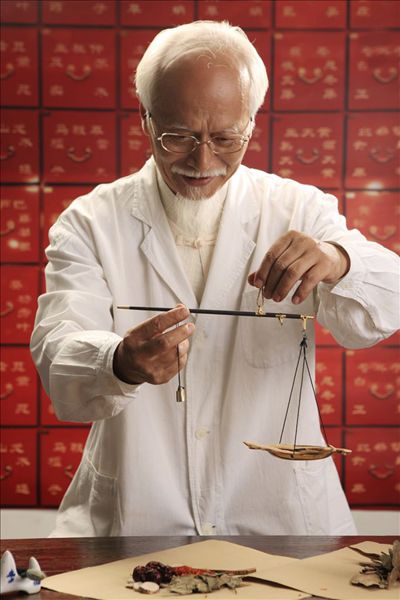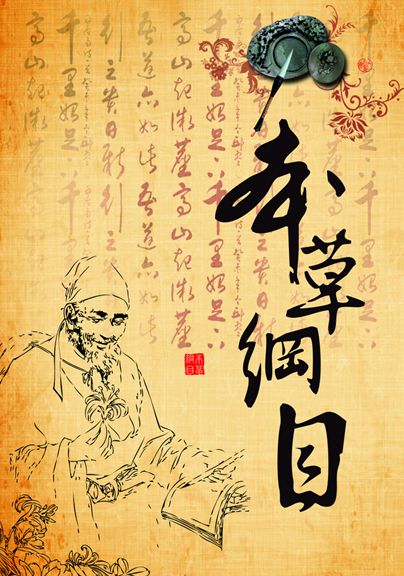By ZHANG HUA
By ZHANG HUA
ALTHOUGH Western medicine is currently more prevalent, traditional Chinese medicine (TCM) – a distinct Chinese element of medicine – maintains a vigorous vitality. After centuries of development, bountiful experiences in diagnosis and treatment have enriched TCM theories, and a good number of cases prove its practical value in this field. TCM is at the same time an important part of traditional Chinese culture.

High-level TCM practitioners are sorely needed.
TCM origins are in primitive society. According to Chinese legend, mythical ruler Shennong sampled hundreds of herbs for use as medicines. Furthermore, Fu Xi, forefather of early Chinese civilization, was said to have created therapeutic techniques with stone needles. These legends from over 4,000 years ago imply a long history of TCM while revealing the start of two of its key sub-disciplines – traditional Chinese pharmacology and acupuncture.
Moxibustion, acupuncture, and decoction are the main TCM therapies. Moxibustion involves hot compresses using wormwood and other herbs. Acupuncture refers to puncturing “acupoints” with needles. Decoctions are made from herbs. No matter which therapy is adopted, TCM treatments always stick to the principle of balancing yin and yang.
TCM theories began to take shape some 2,000 years ago, based on the philosopies of jing and qi, the five elements of nature, and yin-yang. Jing and qi are the vital essences of life. The five elements, i.e. wood, fire, earth, metal and water, are believed to mutually reinforce and restrain each other. Yin and yang represent the two opposing aspects of an object or two contradictory objects. Keeping yin and yang balanced ensures good health. Upon losing the balance, moxibustion, acupuncture, or herb decoctions will be used to reconcile the health. Jing and qi, the five elements of nature, and yin-yang form the TCM fundamentals as regards the human body’s structure, physiological functions, and pathological changes.
Unlike Western medicine, which tends to take stopgap measures to treat diseases in separate parts of the body, TCM treats a patient holistically as it sees the body as an organic whole. A TCM doctor is required to diagnose and treat based on an overall analysis of the illness and the patient’s condition. In other words, when making a diagnosis, a doctor must be able to tell where the nidus is, distinguish the true factors of the illness, and discover the pathogenesis. For example, renowned doctor Hua Tuo (c. 145-208) once gave different prescriptions to two patients who both suffered from headaches since he found the pathogeneses were quite different.

Compendium of Materia Medica, compiled by Li Shizhen, is an encyclopedia of traditional Chinese medicine.
TCM adopts the methods of the “four diagnostics” – observation, auscultation, inquiry, and palpation. On top of that, TCM doctors identify diseases based on the eight principal notions which include four pairs of elements that are opposite yet complementary – biao (exterior) and li (interior), cold and heat, xu (deficiency) and shi (excess) as well as yin and yang – suggesting a dialectical philosophy in TCM.
The first work on TCM was the Huangdi Neijing, also known as The Emperor’s Inner Canon, written over 2,000 years ago. The book sums up the achievements in Chinese medicine throughout history and at the same time lays a TCM theoretical basis. It still has guiding significance in modern times.
During the Han Dynasty (206 BC-AD 220), Shennong Herbal Encyclopedia was completed. It is the world’s earliest book on herbal medicine and one of the key monographs on TCM. The encyclopedia ranks herbs on three levels according to their effects as regards treatment, health maintenance, and toxicity. What’s more, it reveals that different herbs have different cold, cool, warm, and hot natures as well as distinct sour, bitter, sweet, pungent and salty flavors.
Zhang Zhongjing, who lived in the same period as Hua Tuo, wrote the first clinical monograph, Treatise on Febrile and Miscellaneous Diseases. It was split into two books, Treatise on Febrile Diseases and Synopsis of Prescriptions of the Golden Chamber by later generations.
Hua Tuo invented the first anesthetic in the world – mafeisan. Later, Wang Shuhe (201-280) wrote Mai Jing (The Pulse Classic), the earliest monographic work on sphygmology available in China. The Tang Materia Medica published in the Tang Dynasty (618-907) was the world’s first national pharmacopoeia enacted by a government. In the Ming Dynasty (1368-1644), dedicated medical expert Li Shizhen (1518-1593) wrote Bencao Gangmu (Compendium of Materia Medica), an encyclopedia of traditional Chinese medicine.
With faster healing effects, Western medicine has become prevalent in China since the late Qing Dynasty (1644-1911) and had great impact on TCM, so much so that a debate on whether to maintain TCM took place. It wasn’t until the establishment of the People’s Republic of China in 1949 that TCM started to be revived. However, it has been challenged by a dwindling number of patients, declining appeal, a shortage of high-level practitioners as well as a lack of breakthroughs in theoretical innovation. In October 2015, Tu Youyou, a Chinese TCM researcher, won the Nobel Prize in physiology/medicine, an achievement that has injected new life into the development of TCM.
(Selected from Monthly Digest by Zhonghua Book Company)